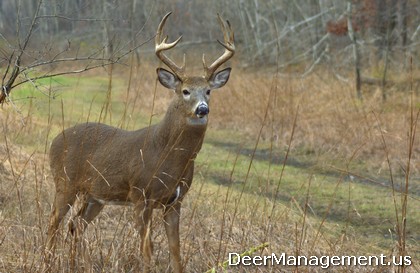Question: Antler Shedding in Bucks
“We have a property in North Texas that we’ve been managing for white-tailed deer. This year, we’ve have noticed a 2 year old buck that still has his antlers and it’s almost mid-April. I know that antler shedding in whitetail bucks can be influenced by many factors like the length of the rut, overall stress and condition of the animal before winter.
On our property, we feed the deer year around with protein and/or cottonseed and plant fall food plots for the hunting season as well. It seems most years the bucks will lose their antlers in late February and March. Not sure if our management program is changing things up or something else may be in play. Can you offer any thoughts about the late shedding buck on our property. ”

Deer Management: Response on Bucks and Their Antlers
First, good work with regards to paying attention to what’s happening on your property. This is a huge part of learning about your land, the deer found there and managing for them. Everything you said is correct, as lots of things impact the growth and loss of a buck’s antlers. Weather, body condition, as well as stress and even genetics influence when a buck tends to shed his antlers. The news about your late-shedding buck is good news.
If a buck is nutritionally stressed or injured, he will drop his antlers early in order to save resources, energy and maybe even his life. It’s a natural process where the deer’s body realizes it is important to change to survival mode, not necessarily remain in breeding and fighting mode. The increased stress, whether from poor nutrition or from an injury sustain before or during the rut, must be remedied first. Your buck is the complete opposite of the scenario I just outlined, so he’s likely in great shape!
When a buck’s nutrition level is high and habitat conditions are good, then a whitetail buck tends to carry his antlers for a longer period of time, which means later into the spring. Researchers believe that genetics can play a part on when bucks shed their antlers, but day length (photoperiod) and overall deer health and nutrition are the primary players.
The Big Factors on Antler Shedding
Day length and body condition impact the hormone testosterone, which is responsible for regulating antler growth and loss, so they ultimately determine whether the buck has high or low “T.” Bucks with chronic low testosterone levels remain in velvet year-round and are referred to as stag bucks or cactus bucks. This is almost always the result of injury. So when will your 2 year old buck shed his antlers? When his testosterone level drops. I suspect its tapering off rapidly by now.